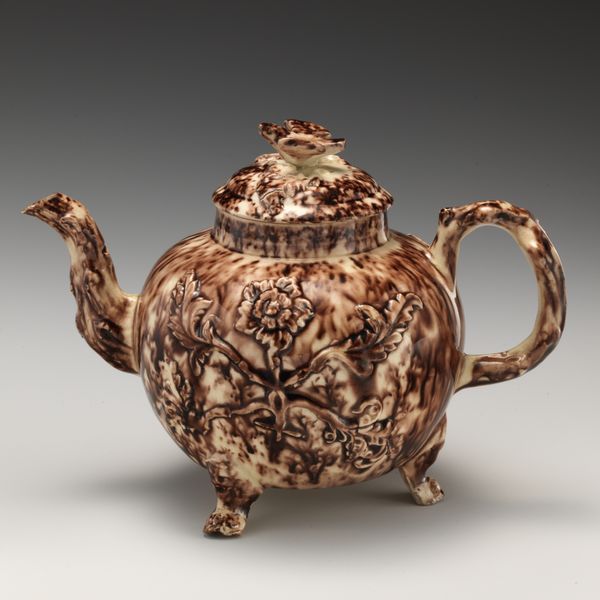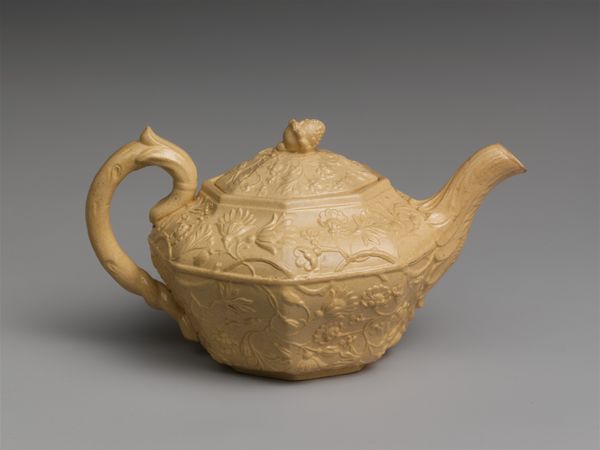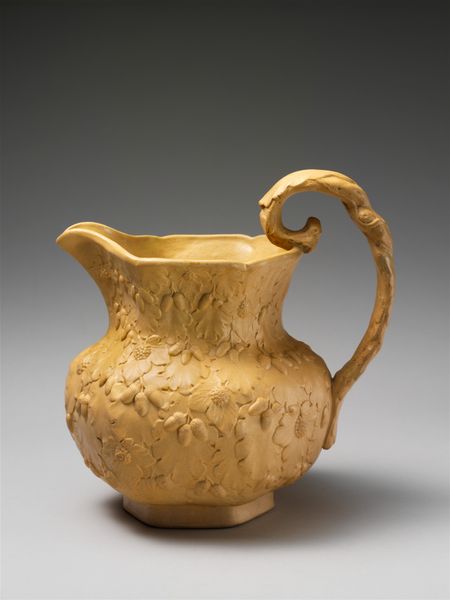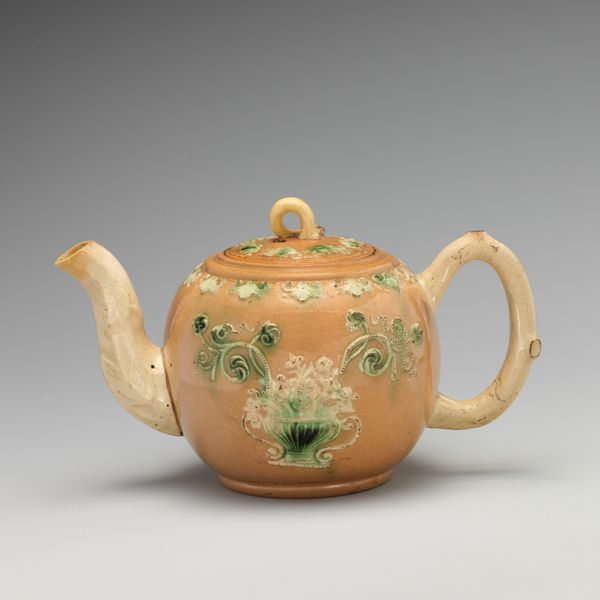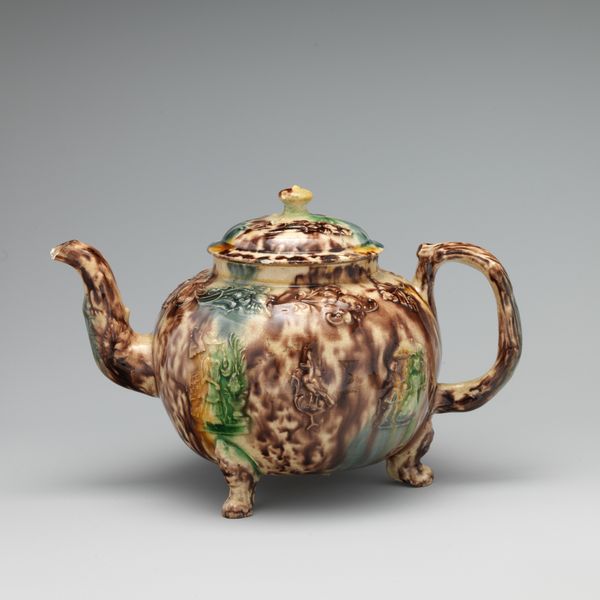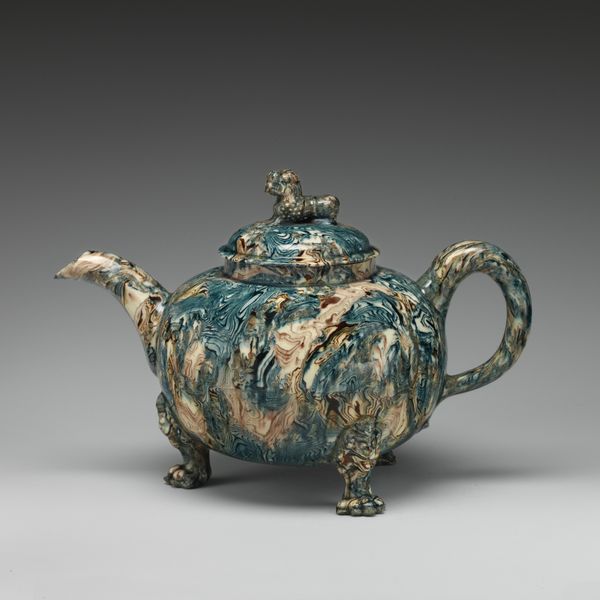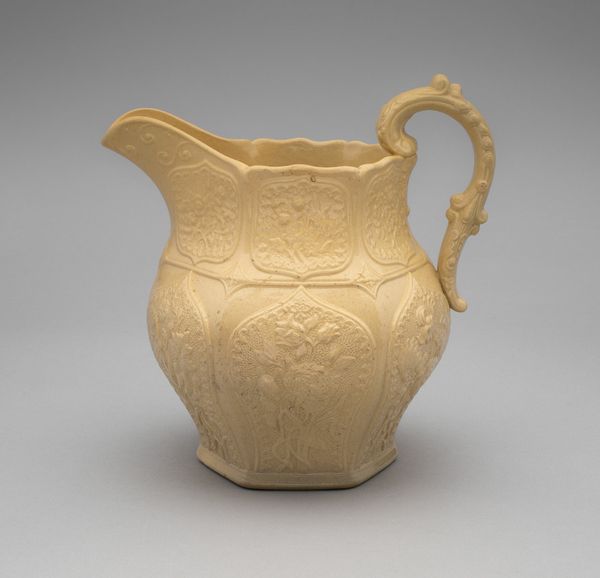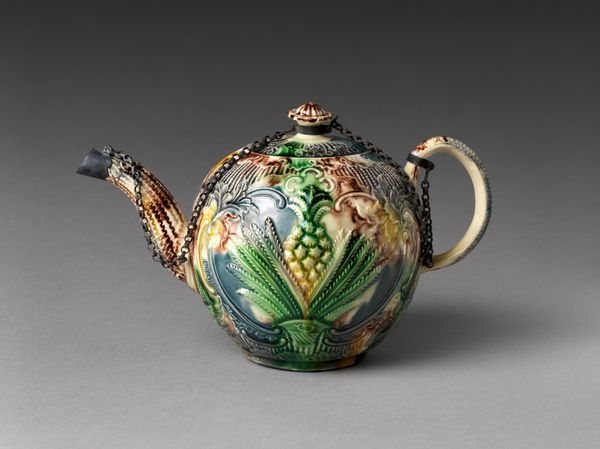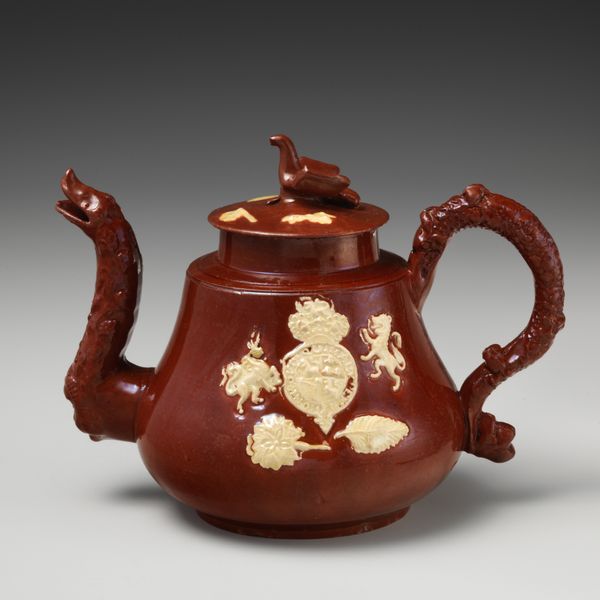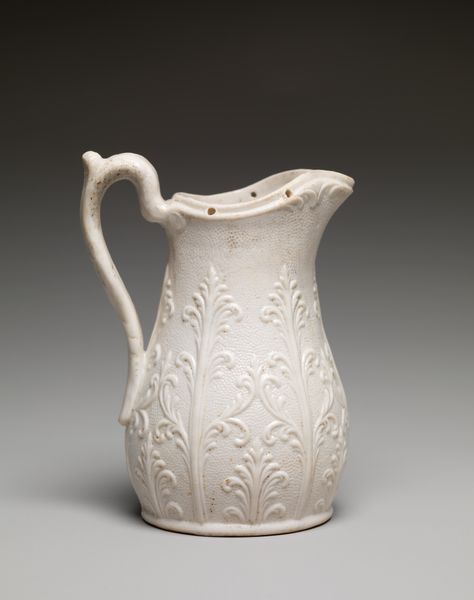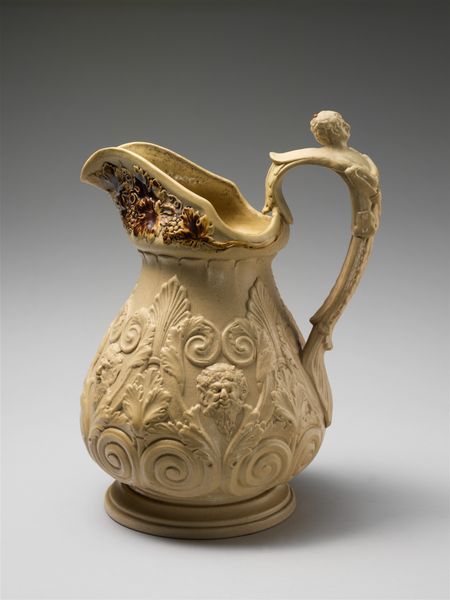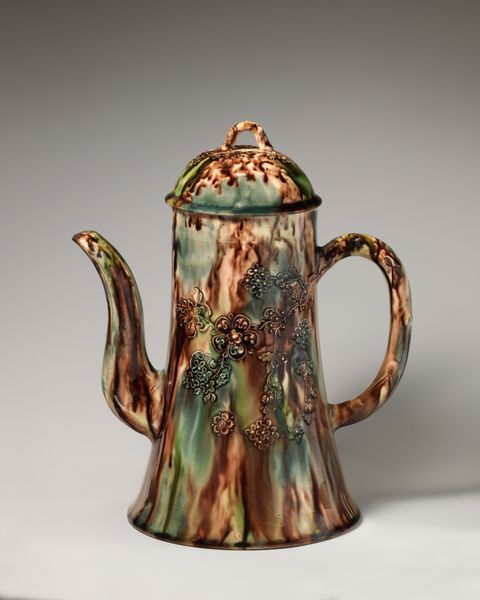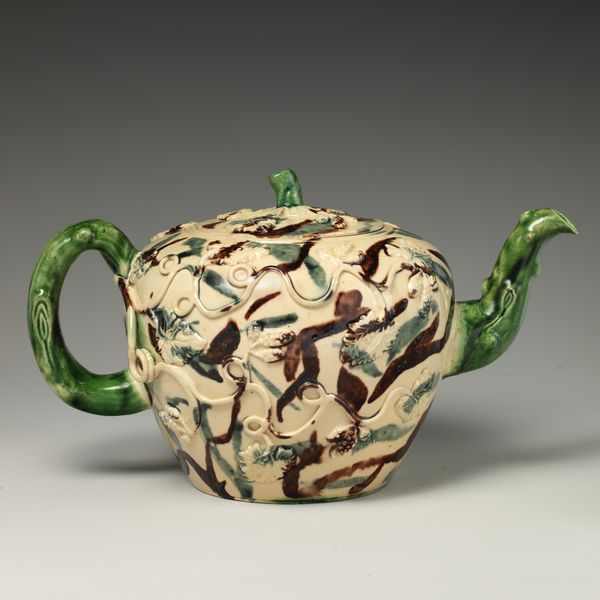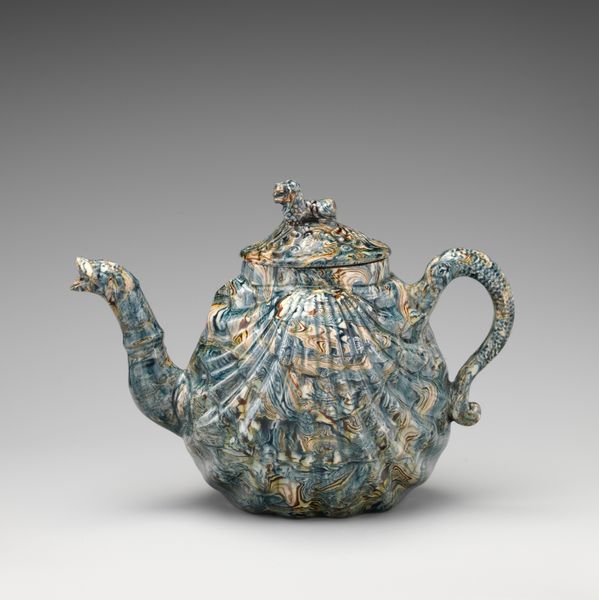
ceramic, sculpture
#
baroque
#
ceramic
#
sculpture
#
ceramic
Dimensions: Overall: 5 1/4 × 6 3/8 in. (13.3 × 16.2 cm)
Copyright: Public Domain
Editor: Here we have a ceramic teapot of Whieldon type, made sometime between 1730 and 1765. I’m immediately struck by the swirling patterns; it almost looks like wood grain. What can you tell me about this unusual piece? Curator: Well, these so-called Whieldon-type ceramics, while popular in their day, reflect broader trends in 18th-century society and its complex relationship with trade and status. Consider where tea came from and who could afford it. Editor: Right, tea was a luxury item, so owning something like this was a statement? Curator: Precisely. The very act of possessing a decorative teapot was a social signal. It indicated belonging to a certain echelon. But also think about how global trade networks were being formed at this time, connecting the British Isles to the rest of the world in new ways. Editor: The patterns do mimic other materials. Curator: Exactly! The mottled, wood-like or tortoiseshell glazing – often achieved through techniques like slipware – wasn't just decorative. It was also about simulating more expensive materials, making luxury accessible. So what was once limited to the aristocracy now becomes available to a wider range of customers. It changes the dynamic entirely, does it not? Editor: That makes a lot of sense. It's fascinating to see how a seemingly simple object can reveal so much about society and its values. Curator: It also brings attention to art’s changing function in culture. Thank you for giving us the opportunity to examine this unique work. Editor: It certainly gave me a lot to consider as well, about art’s many cultural functions and socioeconomic realities.
Comments
No comments
Be the first to comment and join the conversation on the ultimate creative platform.
